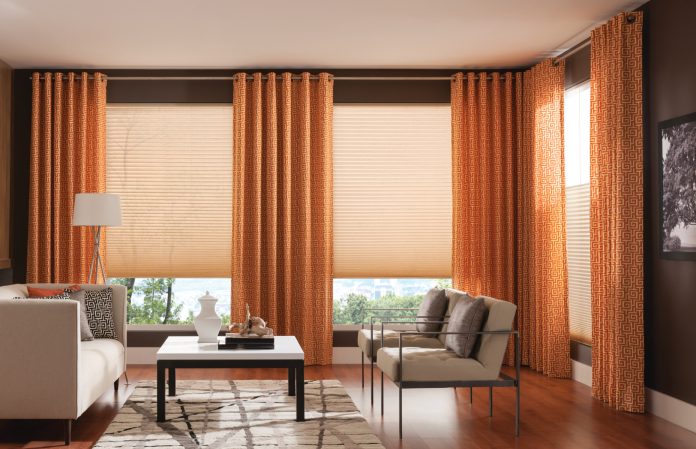Curtains and blinds are more than just simple window coverings; they play a crucial role in enhancing the ambiance, privacy, and functionality of your living space. Although easy to purchase, install, and operate, many homeowners may not fully understand their variety and benefits. Both curtains and blinds fall under the broader category of window treatments, commonly known as draperies. In this comprehensive guide, we will delve into the different types of curtains and blinds, their unique advantages, and expert tips to help you select the perfect window coverings tailored to your home’s style and needs.
What Are Curtains?
Curtains are fabric-based window coverings designed to control natural light and provide privacy. They can be drawn open or closed, creating either an intimate or open atmosphere within a room. In regions like Dubai, curtains are available in various materials including cotton, silk, velvet, polyester blends, vinyl, and even metallic fabrics to match distinct interior preferences. Unlike blinds, which usually have slats or panels, curtains typically hang from rods using hooks, rings, or grommets, providing a wide array of design options from sheer to blackout styles.
What Are Blinds?
Blinds are structured window coverings composed of horizontal or vertical slats that can be tilted, raised, or lowered to regulate light and maintain privacy. Commonly made from materials like aluminum, wood, faux wood, fabric, or PVC, blinds offer greater control over light direction compared to curtains. They are popular choices for modern and minimalist decor settings and can be operated manually or with motorized systems for convenience. Additionally, blinds are ideal for spaces requiring precise light control, such as offices or media rooms.
Types of Curtains and Blinds
There is a wide variety of curtains and blinds designed to fit different styles and functional needs. Materials range from natural fabrics like cotton, silk, wool, and linen to synthetic blends that offer durability and easy maintenance. Popular curtain styles include rod pocket, grommet, tab top, pinch pleat, and pinch pleated panels that offer sophisticated folds. Blinds come in multiple styles such as Venetian blinds (horizontal slats), vertical blinds, roller blinds, Roman blinds, and cellular blinds, each providing distinct light filtering and aesthetic qualities.
Fabric curtains provide versatility in design and are available in sheer, semi-sheer, and blackout options. They are easy to clean and come in countless colors and patterns, making them suitable for various room decors. Wooden blinds exude a warm, natural charm and are often chosen for living rooms and bedrooms; they are durable but may require professional installation due to their weight. Metal curtain rods, known for their strength and modern appearance, can support heavy drapery, while plastic rods offer an affordable and lightweight alternative suitable for lighter fabrics or casual spaces.
How to Install Curtains and Blinds
Installing curtains or blinds yourself can be a rewarding way to personalize your home while saving on costs. Before installation, you will need the right tools and materials: curtain panels, rods, rings for curtains, and brackets, dowel rods, and cord winders for blinds. Precise measurements are essential—measure the window width and height accurately to ensure a perfect fit.
For curtains, double the window width when cutting fabric to allow for meaningful gathers, and triple the height for generous drapes. Hemming the edges is crucial for a neat finish. When hanging, ensure rods are secured into wall studs or anchors to support the weight. Blinds require mounting brackets screwed into the window frame or wall, and proper alignment is key for smooth operation.
How to Care for Curtains and Blinds
Maintaining curtains and blinds not only preserves their appearance but also extends functionality. Here are effective care tips:
1. Regular Cleaning: Dust and allergens can accumulate on window treatments. Vacuum fabric curtains weekly with a brush attachment and clean blinds with a damp microfiber cloth or a specialized blind cleaner. For deeper cleaning, many curtains are machine washable, but always check the manufacturer’s care label.
2. Avoid Dryer Damage: Most delicate curtain fabrics should be air-dried to avoid shrinkage or fabric damage. Hang curtains on sturdy hangers or clotheslines after washing.
3. Proper Placement: Avoid mounting curtains against a windward wall with constant drafts, which may cause unnecessary wear or damage. Use curtain tiebacks or holdbacks to secure panels during windy conditions.
Conclusion
Curtains and blinds are essential elements in home decoration, offering much more than just privacy or light control. Their choice impacts room aesthetics, energy efficiency, and comfort. By understanding the various types, materials, and installation techniques, you can select window coverings that perfectly suit your lifestyle and interior design. Whether you prefer the elegance of fabric curtains or the functionality of blinds, investing time in selecting and maintaining your window treatments will enhance your living space significantly.
Additionally, for those eager to explore further insights on Curtain design ideas, we encourage you to visit our dedicated Home Appliances category for more expert advice and inspiration.
Enhancing your home with the right curtains and blinds not only elevates its aesthetic appeal but also contributes to energy efficiency by providing insulation and reducing heat loss or gain. By choosing blackout curtains or insulated blinds, you can optimize indoor temperatures, lowering energy bills while ensuring comfort throughout the year. Moreover, modern smart blinds now offer automation features that allow remote control and scheduling, increasing convenience and safety. Considering these factors alongside style will help you make the most practical and stylish choice for your home’s windows.

























